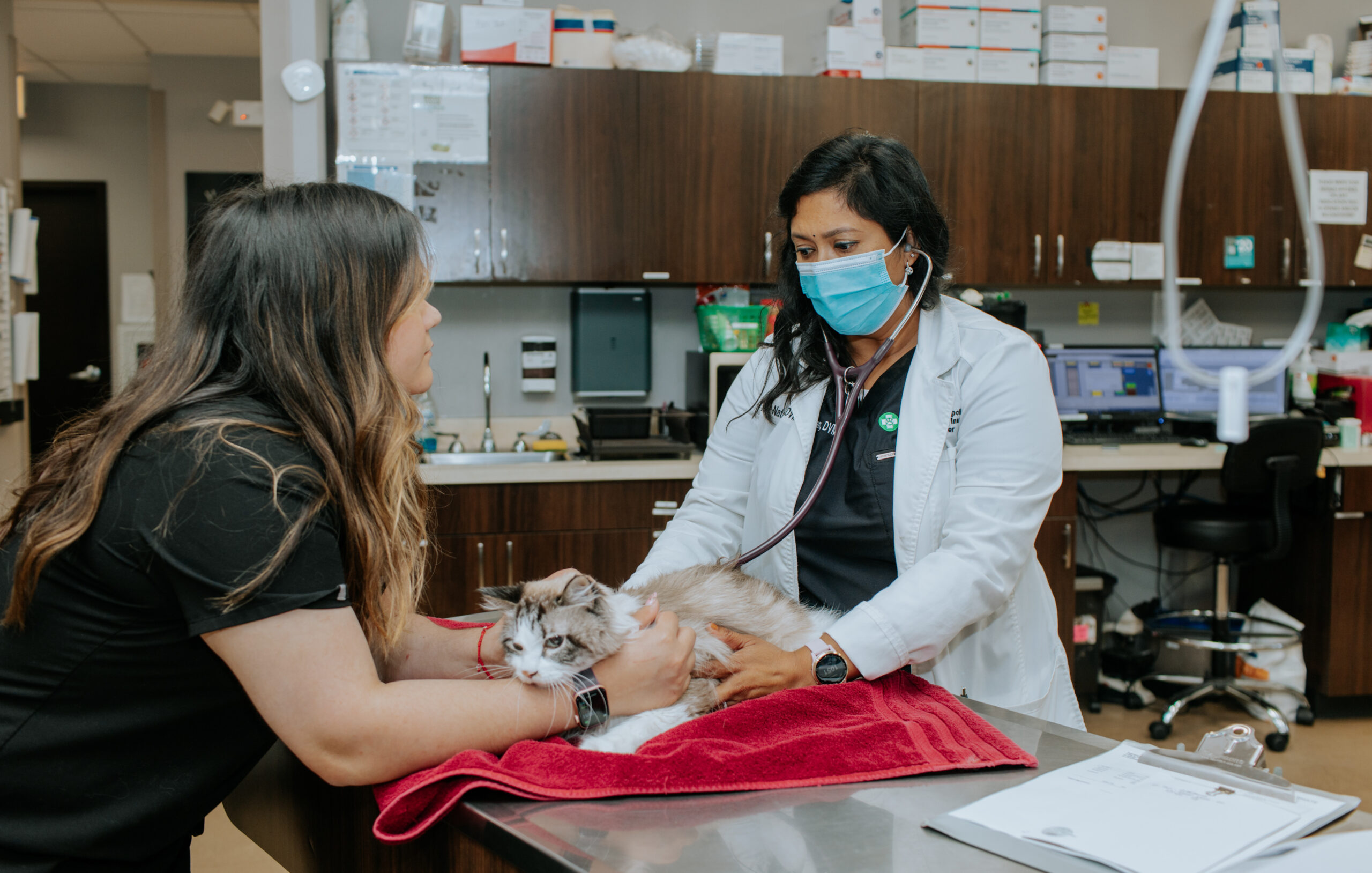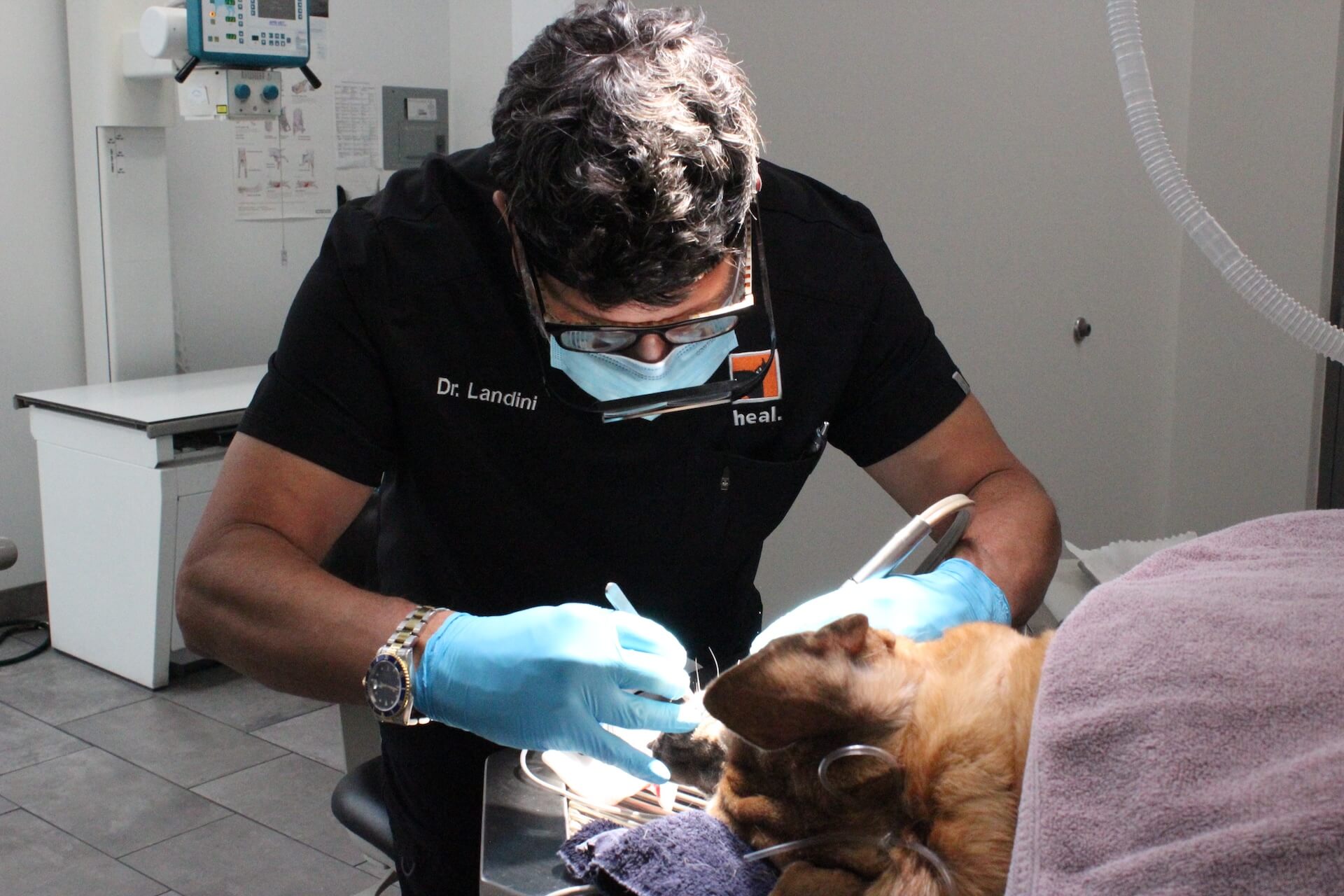Everything About Veterinarian Surgery: Comprehending the Relevance of Specialist Look After Your Pets
Veterinary surgical procedure is an essential element of animal health care. It includes different treatments, from routine elective surgeries to immediate interventions. Understanding the complexities of these surgical procedures can assist pet dog owners make notified decisions. The preparation, implementation, and healing stages are essential for making certain the wellness of animals. With correct understanding, proprietors can browse the intricacies of vet treatment. What elements should be taken into consideration prior to a family pet goes through surgical treatment?
Kinds of Vet Surgeries
When a pet dog needs surgical treatment, understanding the different kinds of veterinarian surgical procedures can aid animal owners make notified decisions. Veterinary surgical treatments can be broadly classified into three main kinds: optional, urgent, and emergency situation surgical treatments. Elective surgical procedures, such as spaying or neutering, are planned treatments that are not instantly deadly. Urgent surgical treatments, like those for foreign body removal, need to be done soon yet are not life-threatening in the minute. Emergency surgical procedures, such as those attending to extreme trauma or internal blood loss, are essential and require immediate attention.Additionally, surgical procedures can vary in complexity, varying from minimally intrusive laparoscopic treatments to extra substantial open surgeries. Each sort of surgical procedure lugs its very own threats and healing procedures. Understanding these classifications enables pet dog owners to participate in purposeful discussions with veterinarians, bring about much better results for their beloved animals.
Planning for Your Animal's Surgery
Preparing for a pet dog's surgical treatment entails a complete checklist to assure all essentials are covered. Reliable interaction with the veterinarian is important for comprehending the procedure and any kind of necessary pre-operative steps - emergency vet bellingham. Additionally, having clear post-operative care directions will certainly aid owners supply the most effective support for their recuperating family pets
Pre-Surgery List Fundamentals
Assuring a smooth surgical experience for a pet dog needs cautious preparation and focus to detail. A pre-surgery list is essential for family pet owners to comply with. Confirming the set up surgical procedure date and time is important. Proprietors need to also confirm that their family pet has not eaten according to the vet's instructions, usually for 8-12 hours prior to surgery. Gathering necessary clinical records, consisting of vaccination background, is necessary for the veterinarian's testimonial. It is additionally suggested to prepare a comfy space in the house for the family pet's recovery after surgical treatment. Finally, owners need to have a prepare for transport to and from the vet facility, making certain that the pet dog is protected and comfy throughout the trip. Complying with these steps can considerably improve the surgical experience.
Interacting With Your Veterinarian

Reliable communication with the vet is vital for an effective surgical experience for family pets. Proprietors must be prepared to review their pet dog's case history, including any kind of pre-existing conditions, drugs, and allergies. This info assists the vet evaluate risks and tailor the medical plan appropriately. Additionally, animal proprietors need to ask inquiries pertaining to the procedure, anesthetic, and expected results to ensure they fully understand the procedure. Clarifying any uncertainties can reduce anxiety for both the pet and the owner. It is likewise essential to communicate any type of behavior adjustments or problems observed in the family pet leading up to the surgery. Eventually, clear dialogue cultivates trust fund and cooperation, making sure that family pets receive the very best possible care during their surgical journey.
Post-Operative Treatment Instructions
After reviewing the surgery with the vet, animal proprietors need to concentrate on post-operative treatment instructions to promote a smooth recovery for their pet dogs. These instructions normally consist of monitoring the medical site for signs of infection, such as redness or discharge. Pet dogs might need to be kept tranquil and restricted to stop too much activity that can disrupt recovery. Pain administration is vital, so owners ought to comply with the veterinarian's support on administering medicines. Additionally, nutritional restrictions may be advised to prevent intestinal trouble. Normal follow-up appointments are essential to assure appropriate healing and attend to any type of issues. By adhering to these post-operative care instructions, pet dog proprietors can substantially add to their pet's healing and overall well-being.
The Surgery Explained
The surgical procedure for pets encompasses vital steps that assure their safety and security and recovery. Pre-surgery preparations are essential for decreasing threats, while post-operative treatment guidelines play an essential function in promoting healing. Recognizing these elements assists animal owners navigate the surgical experience extra successfully.
Pre-Surgery Preparations
Before a family pet undertakes surgical treatment, several crucial preparations need to happen to guarantee a secure and successful procedure. A detailed veterinary examination is necessary to evaluate the pet's total health and identify any kind of prospective threats. This might consist of blood examinations, imaging, or various other diagnostics. The veterinarian will certainly likewise go over anesthetic alternatives customized to the family pet's certain requirements. In addition, family pet proprietors are typically instructed to hold back food and water for a specified time prior to surgery to lessen the risk of difficulties throughout anesthesia. It is necessary for owners to give a complete case history, Look At This consisting of any medications or allergic reactions, making certain the surgical team has all essential information. Proper interaction and adherence to pre-surgery standards can considerably improve the outcome of the procedure.
Post-Operative Care Standards
Proper post-operative care is important for making certain a family pet's healing complying with surgical procedure. After the treatment, family pets need to be monitored very closely for any kind of indications of difficulties, such as excessive blood loss, swelling, or unusual habits. It is necessary to comply with the veterinarian's guidelines pertaining to medications, including pain reducers and anti-biotics. Pet dogs ought to be kept in a silent, comfy environment to lower stress and advertise healing. Limiting activity is vital; short, leashed strolls may be required, yet jumping or running must be prevented. Regular follow-up visits need to be scheduled to examine the recovery procedure. Furthermore, the surgical website should be kept clean and dry, with any signs of infection reported to a vet immediately. Following these standards improves recovery end results.
Anesthesia and Discomfort Administration
Reliable anesthesia and pain management are vital components of vet surgical procedure, making sure that pets remain comfortable and safe throughout the treatment. Veterinarians evaluate each pet dog's specific needs, thinking about factors such as age, weight, wellness condition, and the kind of surgical treatment being performed.Anesthesia protocols commonly include a mix of pre-anesthetic medications, induction agents, and inhalant anesthetics, permitting accurate control over the pet's level of consciousness. Monitoring throughout surgery is crucial; vets continuously observe vital signs to attend to any type of potential difficulties promptly.Pain management techniques may entail opioids, non-steroidal anti-inflammatory medications (NSAIDs), and anesthetics, customized to the pet's specific situation. This complex technique aids reduce discomfort and promotes a smoother surgical experience. By prioritizing efficient anesthetic and pain administration, vet specialists boost the total well-being of animals going through surgeries, ensuring they obtain the highest possible standard of care.
Post-Operative Treatment and Healing
Following surgical treatment, the emphasis moves to post-operative treatment and healing, which is important for making sure a family pet's risk-free go back to regular tasks. Throughout this duration, pets need a peaceful, comfortable atmosphere to help recovery. Owners need to carefully check their pet dogs for any type of indicators of discomfort or unusual behavior.Veterinary guidelines commonly include certain directions associated with drug management, injury treatment, and dietary changes. It is essential to stick to these recommendations to minimize problems and advertise recovery. Pet dogs may need to be limited from strenuous activities, such as running or leaping, throughout their healing period (tplo surgery).Regular follow-up appointments with the vet enable for surveillance of the pet's progression and timely changes to the treatment strategy. Giving psychological support and friendship can also enhance an animal's recovery experience, aiding to alleviate tension and anxiety. In general, persistent post-operative treatment plays a significant duty in attaining a successful recuperation
Identifying Problems After Surgery
How can pet proprietors determine difficulties after surgical treatment? Understanding of specific indicators is necessary for ensuring the wellness of pets throughout healing. Usual signs consist of excessive swelling, soreness, or discharge at the surgical site, which read may signify infection. In addition, persistent discomfort, shown by yawping or reluctance to relocate, must prompt instant focus. Modifications in appetite or water intake can also indicate problems; a decrease in these actions might indicate discomfort or distress.Moreover, animal owners must check their animals for any kind of unusual habits, such as lethargy or problem breathing, as these can be indicators of severe issues. Vomiting or diarrhea complying with surgical procedure might need immediate vet assessment. Identifying these complications early can significantly influence an animal's recovery procedure, highlighting the relevance of vigilance and prompt communication with a vet for any type of concerning signs and symptoms.
The Role of Veterinary Professionals in Surgical Treatment
Veterinary experts play an important duty in making certain the security and success of operations for family pets, particularly adhering to surgery when monitoring and treatment are critical. These specialists include vets, veterinary specialists, and assistance team, all of whom contribute specialized skills to the surgical process.Before surgery, veterinarians perform comprehensive analyses to evaluate the animal's health and wellness, making certain that any type of underlying problems are managed. Throughout the procedure, the surgical group supplies anesthetic, keeps sterile atmospheres, and monitors crucial signs, very important for minimizing risks.Post-operative treatment is similarly considerable; vet professionals observe for issues, handle pain, and guide proprietors on healing techniques. Their know-how allows them to identify early indicators of distress or infection, ensuring prompt treatment. Ultimately, the collaborative efforts of veterinary specialists in surgical treatment cultivate a risk-free atmosphere, promoting the health of pets throughout the medical trip.

Frequently Asked Inquiries
Just how Do I Pick the Right Vet Doctor for My Animal?
Selecting the appropriate vet surgeon involves investigating qualifications, checking out reviews, and examining the center's setting. It is vital to review the cosmetic surgeon's experience with details procedures and their interaction style when making a choice.
What Are Typical Misconceptions Regarding Veterinarian Surgeries?
Typical mistaken beliefs about veterinarian surgical procedures consist of ideas that they are constantly high-risk, unnecessary, or just for emergency situations. Many family pet proprietors undervalue the benefits of preventative procedures and the skill associated with vet surgical treatment.
Just How Much Will My Family pet's Surgical procedure Cost?
The cost of an animal's surgery can differ significantly based upon factors such as the kind of treatment, the vet's experience, and geographic area (emergency vet). Commonly, costs vary from a few hundred to numerous thousand bucks

Can My Animal Consume Before Surgery?
Prior to surgical treatment, it is usually advised that pet dogs avoid consuming for a specific period. This fasting helps in reducing the threat of complications throughout anesthetic. Owners ought to veterinary jobs consult their vet for precise instructions tailored to their family pet's needs.
Suppose My Pet Has Pre-Existing Wellness Issues?
When a family pet has pre-existing health and wellness problems, it's essential for the vet to assess these aspects before surgery. This assessment guarantees appropriate safety measures are taken, lessening risks and maximizing the family pet's total security during the procedure.